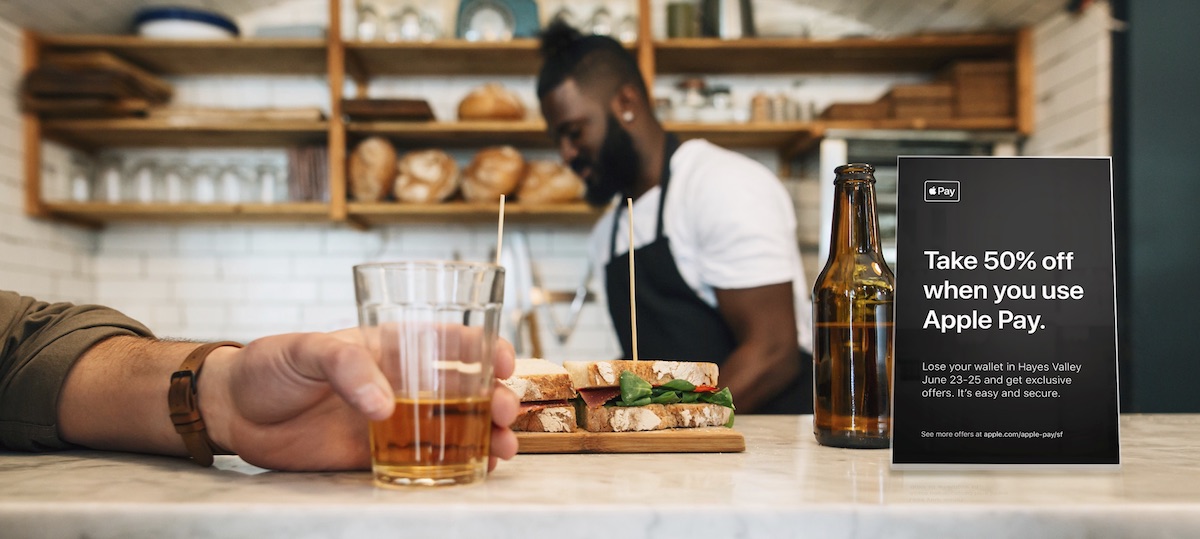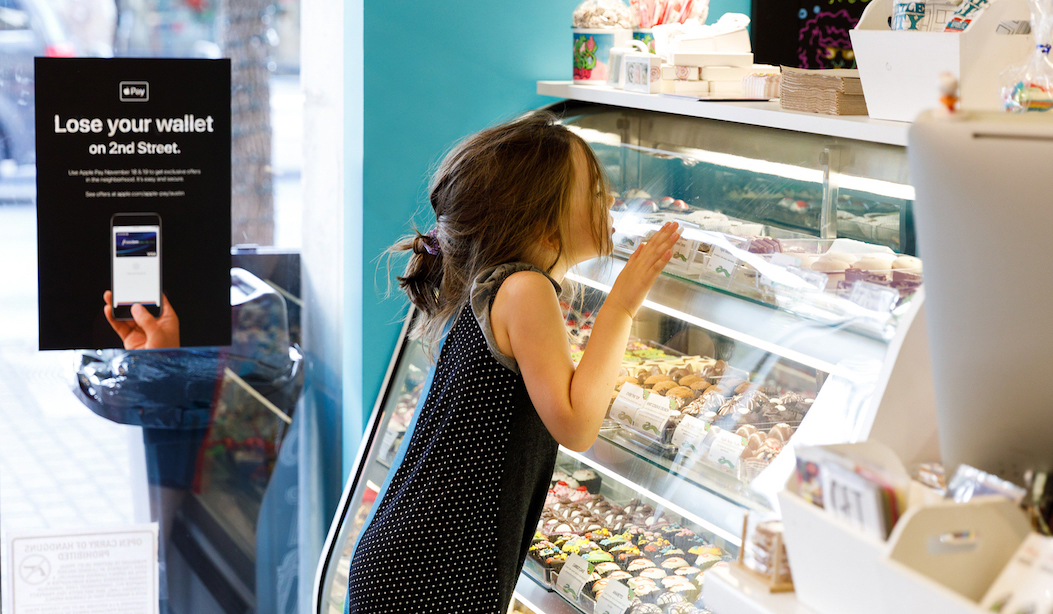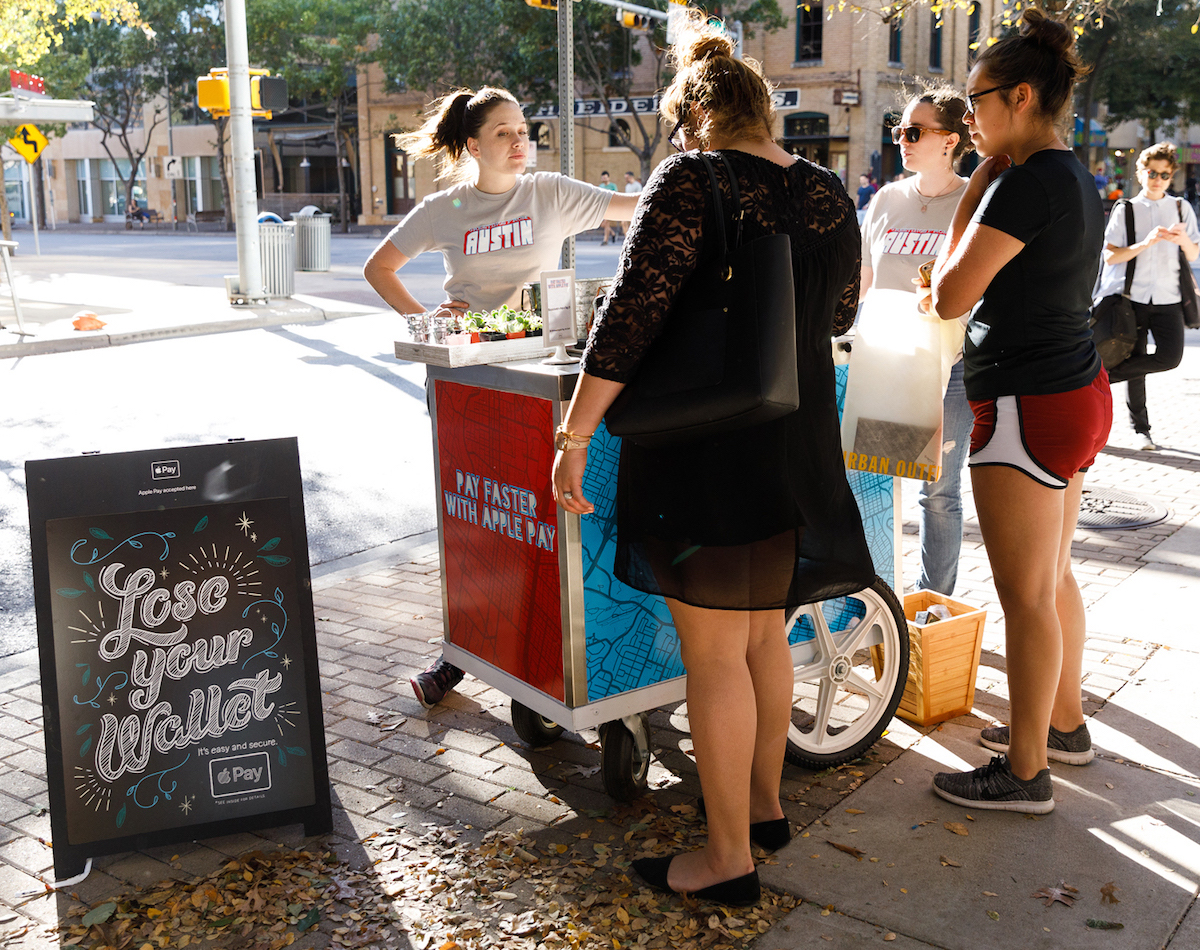(creative marketing, creative direction, concepts, copywriting)
The Apple Pay platform adoption wasn't growing the way Apple had hoped. The marketing efforts had been minimal and measured. The number of businesses adopting the technology remained relatively small. Even in the tech-forward Bay Area and Silicon Valley, the Cupertino giant realized that participation should be better than the numbers showed.
They asked us to think about new messaging for the platform and develop a clever execution plan to get that message out in a clever way—one that wouldn't require a massive budget.
We discovered that we could create a massive wave of Apple Pay adoption and use, if we thought very small.
Knowing that city-dwellers often walk or take public transport to their favorite nearby restaurants and retail stores, we saw the opportunity to build loyalty and buzz if we could get everyone in these active areas to understand how Apple Pay could benefit them.
We recommended going directly to high-traffic neighborhoods and persuading local businesses to participate in a special Apple Pay event. If a popular neighborhood's favorite shops adopted the technology and created special offers for local patrons who try the technology during the event, the convenience of using Apple Pay would win everyone over.
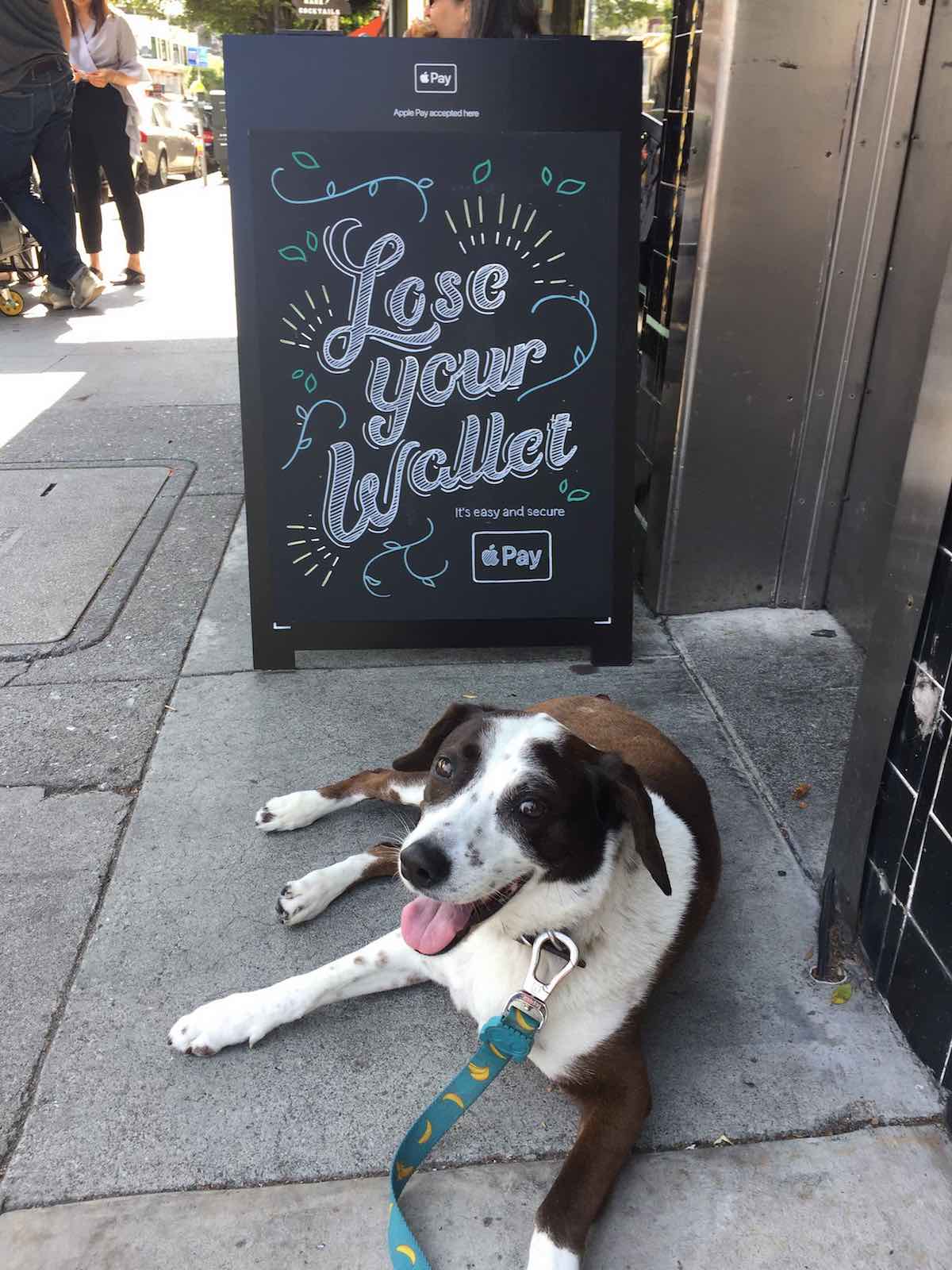
The new messaging told local shoppers and diners that Apple Pay allowed them to "lose" their wallet and go out with only their phone. The eye-catching twist of turning a negative into a positive resonated with the client, the businesses, and iPhone (and Apple Watch) users alike.
We started by planning a weekend event at the Marina in San Francisco. Working with Apple's team, we got nearly half of the local businesses to implement Apple Pay in advance of the festivities.
Then we hired a renowned artist specializing in hand-drawn typography to capture the "sandwich board look" to be used on bespoke boards we created for the local businesses. This would grab attention without disrupting the neighborhood vibe.
Apple experts were on hand for the event to help local shoppers set up their Apple Wallets. Everyone who used Apple Pay during the event received discounts and free gifts when they shopped and dined at the participating businesses.
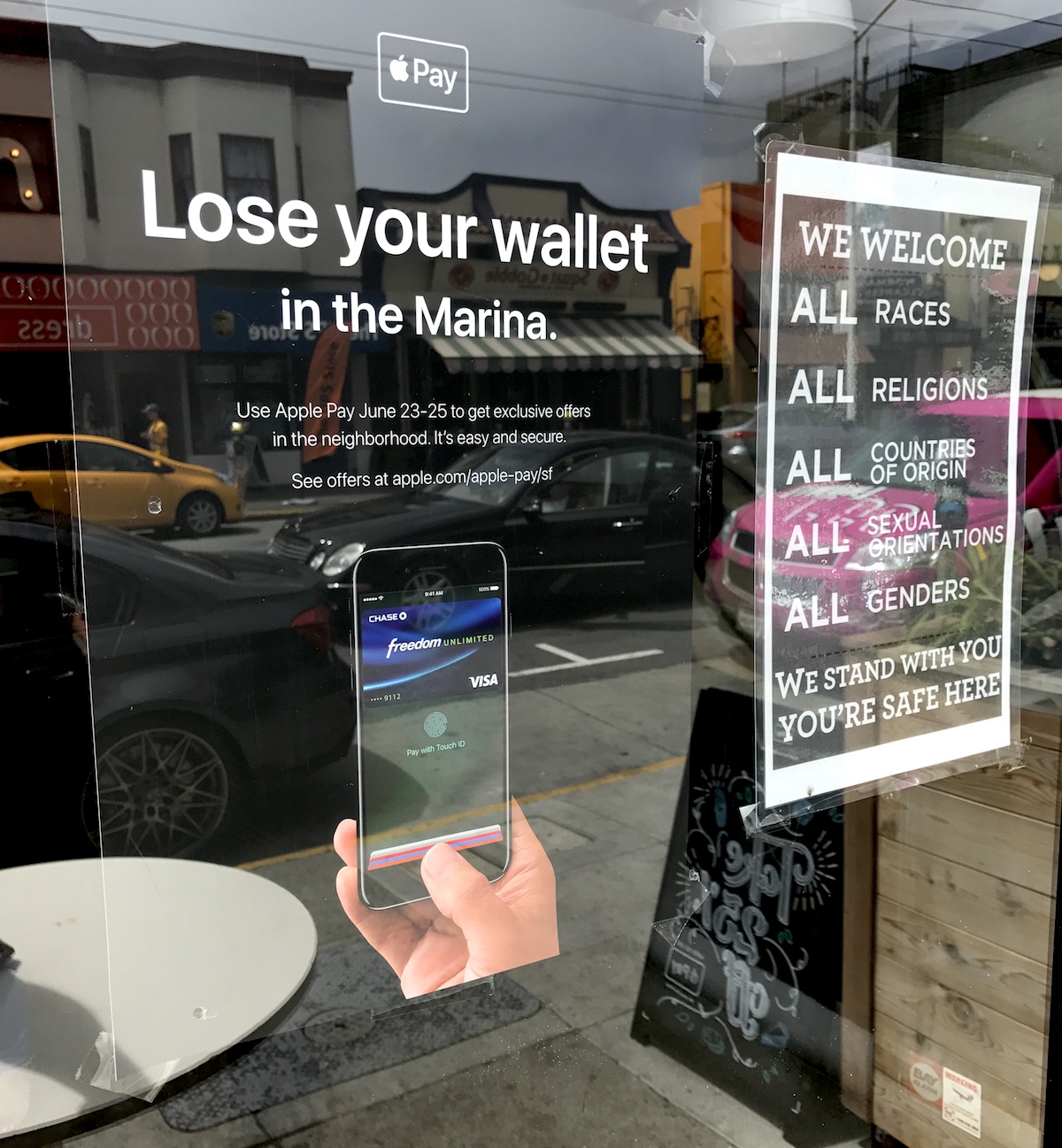
The Marina event was a resounding success. It set off a chain reaction of adoption lasting beyond the event itself. This led to additional budget to hold a larger event at Hayes Valley soon after.
Word spread quickly. Businesses added the Apple Pay option to additional locations.
Consumers began demanding that their favorite businesses add this simple convenience to their existing payment options.
The impact of these small events reverberated throughout the Bay Area at a scale that surprised everyone.
Apple recognized that our campaign and event strategy had the potential to work in any high-foot-traffic shopping area, and "Lose Your Wallet" events soon popped up all around the country.


